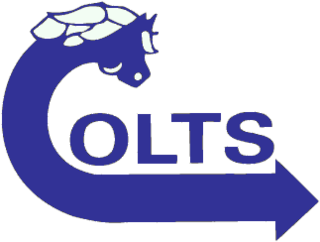
Wilkes-Barre is a city in and the county seat of Luzerne County, Pennsylvania, United States. Located at the center of the Wyoming Valley in Northeastern Pennsylvania, it had a population of 44,328 in the 2020 census. It is the second-largest city, after Scranton, in the Scranton–Wilkes-Barre–Hazleton, PA Metropolitan Statistical Area, which had a population of 567,559 as of the 2020 census, making it the fifth-largest metropolitan area in Pennsylvania.

Moosic is a borough in Lackawanna County, Pennsylvania, United States, 6 miles (10 km) south of downtown Scranton and 13 miles (21 km) northeast of downtown Wilkes-Barre, on the Lackawanna River.

Scranton is a city in the Commonwealth of Pennsylvania, United States, and the county seat of Lackawanna County. With a population of 76,328 as of the 2020 U.S. census, Scranton is the largest city in Northeastern Pennsylvania and the Scranton–Wilkes-Barre–Hazleton Metropolitan Statistical Area, which has a population of 562,037 as of 2020. It is the sixth largest city in Pennsylvania. The contiguous network of five cities and more than 40 boroughs all built in a straight line in Northeastern Pennsylvania's urban area act culturally and logistically as one continuous city, so while the city of Scranton itself is a mid-sized city, the larger Scranton/Wilkes-Barre Metropolitan Area contains nearly half a million residents in roughly 200 square miles. Scranton is the cultural and economic center of a region called Northeastern Pennsylvania, which is home to over 1.3 million residents.

Pittston is a city in Luzerne County, Pennsylvania, United States. It is situated between Scranton and Wilkes-Barre in Northeastern Pennsylvania. The city gained prominence in the late 19th and early 20th centuries as an active anthracite coal mining city, drawing a large portion of its labor force from European immigrants. The population was 7,739 as of the 2010 census, making it the fourth largest city in Luzerne County.

Pittston Township is a township in Luzerne County, Pennsylvania. The population was 3,179 as of the 2020 census. The township is located within the Greater Pittston region. As of 2010, the total population of Greater Pittston was 48,020. The Wilkes-Barre/Scranton International Airport is located in Pittston Township.

The Delaware, Lackawanna and Western Railroad was a U.S. Class 1 railroad that connected Buffalo, New York, and Hoboken, New Jersey, a distance of 395 miles (636 km). Incorporated in Pennsylvania in 1853 primarily for the purpose of providing a connection between the anthracite coal fields of Pennsylvania's Coal Region and the large markets for coal in New York City. The railroad gradually expanded both East and West, eventually linking Buffalo with New York City.

The Wyoming Valley is a historic industrialized region of Northeastern Pennsylvania. The region is historically notable for its influence in helping fuel the American Industrial Revolution with its many anthracite coal-mines. As a metropolitan area, it is known as the Scranton/Wilkes-Barre metropolitan area, after its principal cities, Scranton and Wilkes-Barre. With a population of 567,559 as of the 2020 United States census, it is the fifth-largest metropolitan area in Pennsylvania, after the Delaware Valley, Greater Pittsburgh, the Lehigh Valley, and the Harrisburg–Carlisle metropolitan statistical areas.

The Lackawanna & Wyoming Valley Railroad, more commonly known as the Laurel Line, was a Pennsylvania third rail electric interurban streetcar line which operated commuter train service from 1903 to 1952, and freight service until 1976. Its main line ran from Scranton to Wilkes-Barre.

The Delaware-Lackawanna Railroad is a shortline railroad operating in Northeastern Pennsylvania, especially the Scranton area.

Northeastern Pennsylvania (NEPA) is a geographic region of the U.S. state of Pennsylvania that includes the Pocono Mountains, the Endless Mountains, and the industrial cities of Scranton, Wilkes-Barre, Pittston, Hazleton, Nanticoke, and Carbondale. A portion of this region is located in the New York City metropolitan area.

Greater Pittston is a 65.35 sq mi (169.3 km2) region in Luzerne County, Pennsylvania, in reference to the area in and around Pittston. As of 2010, the total population of Greater Pittston is 48,020. This region includes Avoca, Dupont, Duryea, Exeter Boro, Exeter Township, Hughestown, Jenkins Township, Laflin, Pittston Township, West Pittston, West Wyoming, Wyoming, and Yatesville.

U.S. Route 11 (US 11) roughly parallels Interstate 81 (I-81) in the U.S. state of Pennsylvania. The route runs from the Maryland state line in Antrim Township, Franklin County, northeast to the New York state line in Great Bend Township, Susquehanna County. US 11 serves Harrisburg, Wilkes-Barre, and Scranton. Between Harrisburg and Scranton, US 11 follows the Susquehanna River, while I-81 follows a shorter route over the mountains further to the east.
Pennsylvania State Senate District 22 includes parts of Lackawanna County and Luzerne County. It is currently represented by Democrat Marty Flynn.

The Lackawanna and Bloomsburg Railroad (LBR) was an 80-mile (129 km) long 19th century railroad that ran between Scranton and Northumberland in Pennsylvania in the United States. Incorporated in 1852, the railroad began operation in 1856 and was taken over by the Delaware, Lackawanna and Western Railroad in 1873. The western end of the line, from Northumberland to Beach Haven, is still in operation as the shortline North Shore Railroad.

The Luzerne County Transportation Authority (LCTA) is the operator of mass transportation in the city of Wilkes-Barre, Pennsylvania, and portions of surrounding Luzerne County. Services provided by the LCTA replaced previously offered services of the White Transit Company and Wilkes-Barre Transit Corporation, under a purchase-of-service agreement in 1972.

The County of Lackawanna Transit System (COLTS) is the operator of public transport for the city of Scranton urban area and its surrounding area of Lackawanna County, Pennsylvania. It began operations in 1972, largely using routes established by predecessor Scranton Transit. In 2021, the system had a ridership of 579,100, or about 2,700 per weekday as of the third quarter of 2022.

Duryea Yard is a railroad yard in the Wyoming Valley region of Northeastern Pennsylvania currently operated by the Reading Blue Mountain and Northern Railroad. Originally constructed in 1870 by Lehigh Valley Railroad as a turn-around and staging hub for coal transport from the Coal Region to Eastern big-city markets, the yard remains a hub for the energy extraction industry today.
The Scranton, Montrose and Binghamton Railroad Company was an interurban railway, commonly referred to as the Northern Electric railway, which ran between downtown Scranton, Pennsylvania, and its suburbs to the northwest, including Clarks Summit, Dalton, Factoryville and Montrose.

Martz Group is a bus company headquartered in Wilkes-Barre, Pennsylvania, operating intercity commuter buses, charter buses, and tours. The company operates Martz Trailways, which is a part of the Trailways Transportation System. Martz Trailways provides intercity commuter bus service from the Wyoming Valley cities of Wilkes-Barre and Scranton and the Pocono Mountains in Northeastern Pennsylvania to New York City and Philadelphia. The company runs buses connecting Northeastern Pennsylvania to the casinos in Atlantic City, New Jersey and Wind Creek Bethlehem. Martz Group operates the Gold Line commuter service and Gray Line sightseeing service in Washington, D.C. and the First Class Coach Company Trailways serving Tampa and St. Petersburg in Florida. Martz Bus also offers interstate and intrastate charter bus services.
















